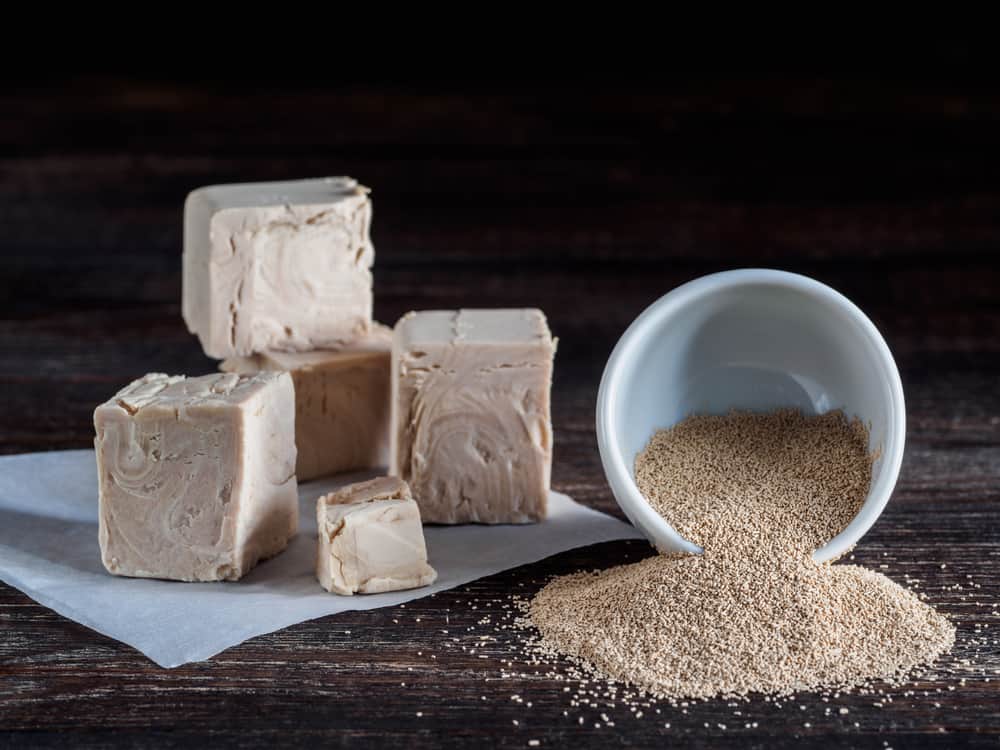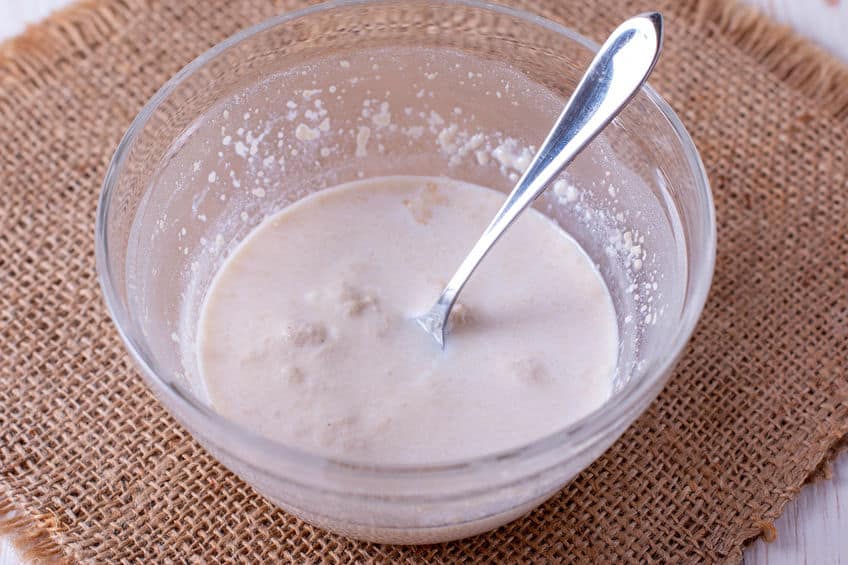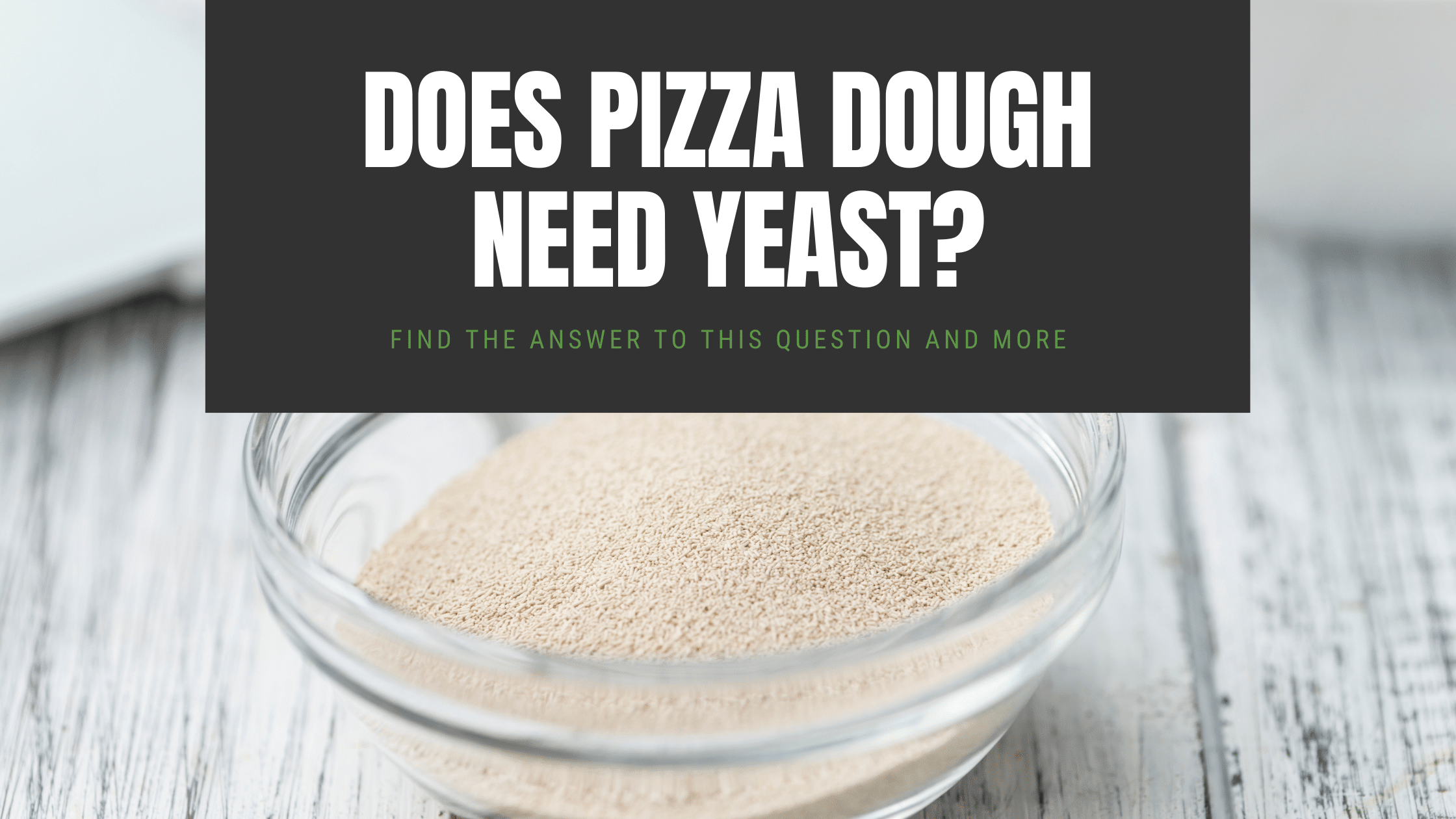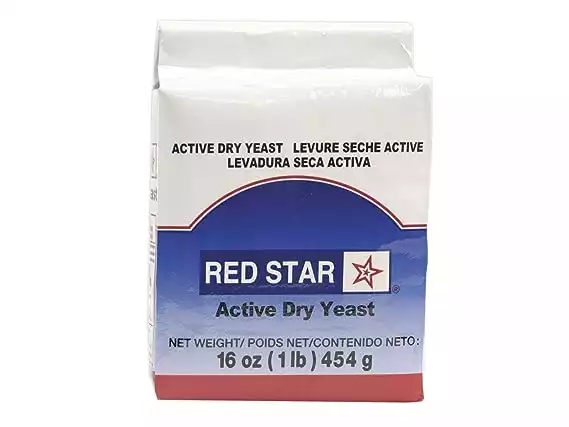“Can you freeze yeast?” – this question has crossed many home bakers’ minds. If you’ve been puzzled by this too, you’re in the right place!
Contrary to popular belief, yeast, a critical ingredient in the realm of baking, can indeed survive the chill of your freezer. Freezing yeast makes it last longer and ensures you’re never out of this vital ingredient when the baking bug bites.
This post will dive into all you need to know about freezing yeast – the why’s, the how’s, and the essential tips.
Join us as we unravel the truths and dispel the myths about yeast preservation. Stay tuned because by the end of this article, the question “Can you freeze yeast?” will no longer be a mystery.
Let’s explore and elevate our baking knowledge to new heights. Keep reading to discover more.
So let’s get started!
Key Takeaways
Can You Freeze Yeast?
Yeast can be frozen: Both fresh and dry yeast can be frozen for extended storage, slowing their metabolic rate and prolonging their viability.
Proper storage is key: Store yeast in an airtight container to protect it from moisture and freezer odors for optimal results.
Thawing method matters: To reactivate frozen yeast, it’s essential to thaw it at room temperature before use.
Freezing doesn’t kill yeast: Freezing puts yeast into a dormant state but does not kill it. Once thawed and rehydrated, yeast resumes its normal activity.
Fresh yeast may lose some potency: When freezing fresh yeast, be aware that it may lose some of its rising power. Using more thawed fresh yeast in your recipe might be necessary or allow extra time for your dough to rise.
Understanding Yeast
What is yeast, and how does it work in baking?
Yeast is a type of fungus that plays an essential role in baking. Because flour does not contain yeast, you need to add it. Accordingly, the yeast is responsible for the fermentation process in the dough, which causes it to rise.
This is done by the yeast consuming the sugars in the dough and producing carbon dioxide gas and ethanol. These gases get trapped within the dough, causing it to expand and resulting in that airy, fluffy texture we associate with freshly baked bread.
Different Types of Yeast and Their Specific Characteristics
There are several types of yeast used in baking, and each has unique characteristics:
Active Dry Yeast
This is the most common type of yeast used in home baking. It is granulated and must be dissolved in warm water before adding it to other ingredients.
Instant Yeast
Also known as fast-rising or bread machine yeast, this type can be mixed directly with dry ingredients without being dissolved first. It works more quickly than active dry yeast. Check our active dry vs. instant article to learn the difference between these two dry yeasts.
Fresh Yeast
Also known as cake yeast or compressed yeast, this type is moist and perishable. It’s popular with professional bakers due to its superior flavor and potency but can be hard to find in grocery stores.
Each type of yeast has its properties, and understanding these can help make the right choice for your pizza baking needs. In the following sections, we’ll explore how these different types of yeast respond to freezing and how best to store each type for optimal results.
Here’s the Yeast the PROs at Homemade Pizza PRO Use and Recommend
Red Star Active Dry Yeast is a trusted choice among bakers. It's known for its consistent performance, balanced fermentation speed, and subtly nuanced flavors it brings to pizza dough, contributing to a well-rounded and delicious crust.
Check out which is the best yeast for pizza dough and why.
Keeping Yeast
As homemade pizza bakers, we want to ensure that our ingredients are in the best condition possible and wouldn’t want to risk any of them being spoiled anytime soon.
Because of this, we should always be well-informed on properly storing yeast to maximize its use in different recipes.
What is the Best Way to Store Yeast?
The best way to store yeast depends on whether it’s opened or unopened and how soon you plan to use it.
- Unopened Yeast: If you have unopened yeast, it should be stored in a cool, dry place until you’re ready to use it. Check the expiration date on the package to ensure it’s still viable.
- Opened Active Dry or Instant Yeast: Once opened, active dry yeast and instant yeast should be stored in an airtight container in the refrigerator. Keeping the yeast dry is important to prevent it from clumping together. Ensure that the container is well-sealed to prevent moisture from entering. Yeast stored in this manner should be used within 4 months for optimal potency.
- Fresh Yeast: Fresh yeast is highly perishable and should be stored in the refrigerator immediately. It’s best used within two weeks. If you need to store it for longer, you can freeze fresh yeast.
- Long-Term Storage: If you don’t plan to use the yeast in the near future, freezing it is the best option for long-term storage. Both unopened and opened yeast can be stored in the freezer. Transferring it to an airtight container is important for opened yeast to protect it from freezer burn and moisture. It can be frozen for up to a year. Remember to allow it to reach room temperature before using it.
Storing yeast in a stable environment with a consistent temperature is key in all cases. Avoid storing yeast in a location with significant temperature fluctuations, like the refrigerator’s door, as this can negatively impact the yeast’s potency over time.

Can You Freeze Yeast?
Yes, you can absolutely freeze yeast. Freezing yeast is an effective way to prolong its shelf life, and it does not harm the yeast. In fact, yeast can stay viable for much longer when stored in the freezer than in the pantry or refrigerator.
Here’s how you can freeze yeast:
- Original Packaging: If your yeast is still sealed in its original packet, you can put it in the freezer. The packaging is designed to protect the yeast from moisture and oxygen, which are two factors that can degrade yeast over time.
- Repackaging: If you’ve opened your yeast package, storing it in an airtight container before freezing is best. This prevents the yeast from absorbing any moisture or odors from the freezer. A glass jar with a tight lid or a vacuum-sealed bag works well for this.
When you’re ready to use your yeast, remove the amount you need and let it come to room temperature before using. This is especially important for active dry yeast, which needs to be rehydrated in warm water before use. Instant yeast can be used directly from the freezer as it doesn’t require rehydration.
It’s worth noting that while freezing extends the lifespan of yeast, it doesn’t make it last indefinitely. Even in the freezer, yeast will slowly lose potency over time. Using frozen yeast within a year is generally recommended for the best results.
So, not only can you freeze yeast, but it’s actually a great way to ensure you always have some on hand for your baking needs.
Why Freeze Yeast?
Advantages of freezing yeast
Freezing yeast offers multiple advantages. Primarily, it allows for extended storage, making it possible to buy yeast in bulk and store it for future use. This is particularly useful for those who don’t bake frequently and find that their yeast often expires before they can use it all.
How freezing extends yeast’s lifespan
When you freeze yeast, you are essentially slowing down the metabolism of the yeast cells to a near halt. This reduced metabolic activity means the yeast cells don’t age (or die off) nearly as fast as they would at room temperature or even in the fridge. As a result, yeast stored in the freezer can remain viable for many months or even up to a year.
Situations where having frozen yeast could be beneficial
Having a supply of frozen yeast can be beneficial in various situations, such as sudden baking impulses, unexpected guests, or even during periods of yeast shortages in stores.
How to Freeze Yeast
Step-by-step guide to freezing yeast correctly
- If the yeast is still in its original, unopened package, you can put it directly into the freezer.
- Transfer the yeast to an airtight container for opened packages or bulk yeast. This could be a sealable plastic bag, a jar with a tight-fitting lid, or a vacuum-sealed bag.
- Before sealing, squeeze out any excess air from plastic bags or containers.
- Label the container with the date to track how long the yeast has been frozen.
- Place the container in the freezer. The yeast should be kept at a consistent temperature, so try to avoid frequently opening the freezer door or placing the yeast in a door compartment.
Specific Instructions for Different Types of Yeast
Active dry yeast and instant yeast can both be frozen following the above steps. Fresh yeast can also be frozen but may lose some of its rising power after thawing.
For this reason, you might need to use more of it in your recipes after freezing.
Tips for Freezing Yeast
To maximize the potency of yeast while frozen, it’s crucial to store it properly. Protect it from moisture and air by using airtight containers, and try to keep it at a consistent temperature.
Lastly, while freezing extends yeast’s life, it’s still a good idea to use it within a year for the best results. For more, check out our yeast tips.
Storing Yeast in the Freezer
Freezing yeast works quite well. In the freezer, the yeast is only placed in a state of suspension, which is far from ruining the yeast cells.
However, it’s still best to use an airtight container to protect it from humidity and oxygen. Glass jars also work just fine; for bulk yeast, you can opt for a canning jar.
How Long Can Fresh Yeast Be Frozen?
When refrigerated, fresh yeast can last up to two weeks. On the other hand, freezing it can keep it for about three months or more.
Once stored, you can also use yeast directly from your freezer. You only have to sprinkle them into a room-temperature liquid to wake them back up again.
Many bakers have already tried keeping yeast in the freezer long after expiration. Surprisingly, there are no noticeable changes to how the yeast works in different baked goods.
How to Activate Frozen Yeast
If you’re still uncertain whether yeast is still good, the best way to test it is in warm water with a small amount of sugar.

Activating Yeast
If it starts to bubble after a couple of minutes, it’s still good enough to use in your recipes.
Will Yeast Die if Frozen?
Yeast can survive freezing, so you don’t have to worry about it dying from the cold. It only remains dormant until you put it into room-temperature liquid to warm up again.
Furthermore, while it’s true that freezing keeps yeast for much longer than it usually does, improper storage can only make it prone to spoilage.
Since yeast comprises living cells, remember to never expose it to moisture and air.
For best results, keep it sealed between 36 to 42 degrees Fahrenheit. Freezing the yeast does not kill it but can still cause damage to its cells since they still have approximately 2% moisture.
How Do You Store Yeast in the Freezer?
Now that we’ve answered, can you freeze yeast? Sealing and storing your yeast largely determines whether it dries out or dies. Because of this, storage is a significant thing to consider.
To ensure that the yeast isn’t at any risk of expiring, here are some things you need to remember for when you’re freezing yeast.
Before anything else, do not immediately put the yeast in the freezer. Instead, put it in the fridge first for about 12 hours. The yeast’s original package is also its best protector, so it’s better to leave it if you have yet to open the yeast.
Moreover, if you want to divide the yeast blocks into smaller parts, cut them as you wish but don’t forget to wrap each in cling film and once more in aluminum foil.
Use a resealable plastic bag – or anything airtight to keep moisture away – and put all the yeast inside. Ensure to squeeze any air out since yeast shouldn’t be exposed to humidity. Seal, and then put the yeast into your freezer.

Using Frozen Yeast
How to thaw and use frozen yeast effectively
To thaw frozen yeast, remove the quantity you need from the freezer and let it come to room temperature.
This is particularly important for active dry yeast, as it needs to be dissolved in warm water before being incorporated into a recipe. Instant yeast, on the other hand, can be mixed directly into the dry ingredients, even when it’s still cold.
When using previously frozen yeast, it’s important to proof it, particularly if it’s been in the freezer for a while. This means mixing the yeast with warm water and some sugar, then waiting for about 10 minutes. If the yeast is active, it should start to froth and bubble. If not, it may be too old and need to be replaced.
How freezing affects yeast’s behavior in baking
Freezing doesn’t significantly impact yeast’s behavior in baking. However, yeast that has been stored in the freezer for a long period may take a bit longer to rise. Keep this in mind when planning your baking time. Also, remember that fresh yeast might lose some rising power after being frozen, so consider using a bit more than your recipe calls for.
Debunking Myths
One common misconception is that freezing yeast kills it. In reality, freezing only slows down yeast’s metabolism without killing the cells. This means that once the yeast is thawed and rehydrated, it becomes active and can be used in baking.
Another myth is that you can’t freeze yeast because it’s a living organism. While it’s true that yeast is a living organism, many types of organisms, including yeast, have the ability to survive freezing temperatures. They do this by entering a dormant state, which allows them to withstand harsh conditions.
A scientific explanation of why these misconceptions are inaccurate
Yeast, like many microorganisms, has the ability to survive in a range of conditions. When yeast is frozen, it enters a dormant state, reducing its metabolic activities to near zero. This greatly slows down the aging process, keeping the yeast viable longer.
Once the yeast is warmed up and rehydrated, it ‘wakes up’ and becomes active again, ready to leaven your dough. Thus, freezing yeast is not only safe, but it’s also an effective preservation method.
FAQs
Can You Freeze Fresh Yeast?
Yes, fresh yeast can be frozen for a longer shelf-life. Freezing is a good option if you have a surplus of fresh yeast that you can’t use before its expiration date.
Here’s how you can freeze fresh yeast:
- Portion the yeast: Break the fresh yeast into the portions you usually use in recipes. This will make using the right amount of yeast easier without thawing and refreezing the rest.
- Wrap the yeast: Each portion of yeast should be wrapped tightly in cling film or plastic wrap. This helps to protect the yeast from freezer burn and contamination from other items in the freezer.
- Store in an airtight container or freezer bag: Put the wrapped portions of yeast into a freezer bag or airtight container. Seal it tightly and mark the date on it for future reference.
- Freeze it: Place the yeast in the freezer. It can be stored for up to 3-6 months.
When you’re ready to use the yeast, it’s important to properly defrost it. Remove the portion of yeast you need from the freezer and let it thaw in the refrigerator overnight. Then, let it sit at room temperature for about 30 minutes to an hour before using it.
Remember that freezing and thawing may slightly reduce the potency of fresh yeast. You may need to use a bit more than what’s called for in your recipe or allow extra time for your dough to rise. Always proof the yeast (dissolve in warm water with a bit of sugar and wait for it to froth) to ensure it’s still active before using.
Can You Freeze Active Dry Yeast?
Yes, you can freeze active dry yeast, and doing so can effectively extend its shelf life up to a year or longer.
Can You Use Yeast Straight from the Freezer?
Yes! You can use the yeast straight from the freezer. Sprinkle it into room temperature water, and it will wake it up right back up again.
How to Know If Frozen Yeast is Alive?
If want to check whether frozen yeast is still alive, just test it out in a little warm water with a pinch of sugar. If it starts bubbling after a few minutes, then it’s good to go.
Do I Store Dry Yeast in Freezer or Fridge?
If you are undecided on where to store dry yeast, the best way to go is to store it in the freezer. Freezing dry yeast ensures you can use it for up to two years, even past the expiration date.
Does Freezing Kill Yeast?
No, freezing does not kill the yeast; instead, it sends it into a dormant state, slowing its metabolic activity and prolonging its viability.
Additional Yeast Resources

Best Yeast for Pizza Dough: Mastering the Art of Pizza Making
the PROs
What is the Best Yeast for Pizza Dough? Pizza – merely mentioning this delicious dish is enough to stir cravings. …

10 Amazing Yeast Tips for Pizza Dough You Need to Master
the PROs
Pizza Dough Yeast Tips Are you looking for some pizza dough yeast tips? We’ve got plenty of information for you! …

Does Pizza Flour Contain Yeast? Find What You Need to Know
the PROs
Ever wonder what gives pizza its mouth-watering, fluffy, and crisp crust? It’s all about the magic happening behind the scenes …

How Much Yeast is in a Packet? Easy Shortcuts (+Yeast Tips from the PROs)
the PROs
How Much Yeast is in One Package? Are you wondering how much yeast is in a packet? Easy! Each yeast …

Does Pizza Need Yeast? You Bet! Here’s What You Need to Know
the PROs
Does Pizza Need Yeast? As a home baker, you might ask yourself if pizza needs yeast. Maybe you are feeling …

Active Dry vs Instant: Which is the Best Yeast for Pizza?
the PROs
In this article, we will help you understand the difference between Active dry yeast and Instant and let you know which one is right for homemade pizza. Find which is the best yeast for pizza and why.

Yeast for Pizza Dough: Your Key to Creating Irresistible, Airy, and Flavorful Crust”
the PROs
Most certainly, you read about yeast before or at least have seen the various yeast packets at the supermarket, not knowing the difference between them.
The Last Slice
We hope we answered your question. Can you freeze yeast? Freezing yeast is an excellent way to store this ingredient since it allows you to use them for much longer than expected.
However, holding it in bad conditions will cause them to expire quickly, rendering them useless. Because of this, it’s vital to still observe proper storage by keeping yeast sealed tightly in an airtight container.
If you want to learn more about yeast, check out our article on the best yeast for pizza.
We hope that this information will help you in your pizza-baking recipes, enabling you to become the best pizza baker you aspire to be!
Enjoy!
Not a PRO? Not a Problem!
Take a pizza class to bring your pizza skills to the next level,
so you can be a PRO!
Related Posts

Costco Pizza Delivery: Find How You Can Get It Now!
the PROs
People go to Costco’s food court for many different reasons, but the cheesy slice of pizza they serve is among …

Pizza for Beginners: Don’t Buy Pizza, Make It! Here’s How to Get Started!
the PROs
You have this idea that you want to make pizza at home as opposed to ordering it, but where do you start? Don’t worry! Here you will find answers and directions to all your questions.

Pizza Toppings Under Cheese or Over Cheese? [Why the Order Matters]
the PROs
Is Pizza Cheese on Top or Bottom? Hey pizza lovers, are you wondering if you should layer pizza toppings under …
Newsletter
Subscribe to our Recipe of the Week newsletter and receive our partners’ latest recipes, tips, and discount offers.
Keep in Touch!


